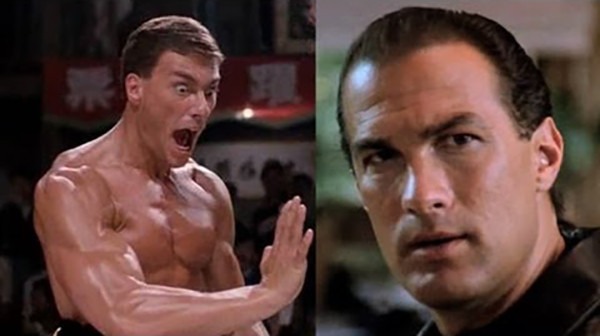She’s Just a Shadow, 2019.
Directed by Adam Sherman.
Starring Tao Okamoto, Haruka Abe, Kihiro, Kentez Asaka, Mercedes Maxwell, and Marcus Johnson.
SYNOPSIS:
A Tokyo crime ring addicted to gun fights, kinky sex, and drug-filled parties is targeted by a vicious, sexist serial killer.
Adam Sherman has crafted an energetic if derivative neo-noir set in Japan but featuring a cast speaking English for most of the film. While the film has several protagonists, it vacillates between two main characters. Kihiro plays Gaven, a drug addict, pining to leave the life of crime and blood behind. Tao Okamoto plays Irene, a madam running a lucrative prostitute ring, who is in an abusive relationship with muscular Red Hot (Kentez Asaka).
Even trying to describe the plot would be pointless as the film is largely an exercise in pure style. This film will probably immediately polarize a viewer. The first few minutes features a brutal sexualized killer combining voyeurism and sadism. Stomach-churning blood baths and frequent vomiting from drugs and/or alcohol ensue from beginning to end.
Being set in Japan, Sherman has taken obvious cues from Quentin Tarantino’s Kill Bill: Volume 1. The problem is while Sherman has made characters in a minimal sense they lack any real substance to give their plight emotive power. There is back-story aplenty as Irene goes on about her weird, sad crime family and how she ascended to the top of Tokyo’s crime elite. Very little of the actual plot makes sense. To be sure, the patient viewer will finally get an “explanation” as such for what the word “shadow” means and connection to the Jack the Ripper villain. But the explanation is fatally close to a howler that makes one pine for the days of Nightmare on Elm Street series when half-explained mythologies, at least, tried to explain why the monster became monstrous with some consistently.
Not being character- or plot-drive, the film turns into a series of vignettes repetitively featuring orgies with naked women, drug-induced comas, and brutal killings featuring women tied to train tracks. Ostensibly, the film is about Irene trying to defend her turf as her girls have become the targets for a serial killer spying on her apartment from his own nearby apartment.
Certainly, Sherman does not avoid trying to give the movie some deepness with imagery of angelic skies appearing intermittently. The problem is the mythology is too esoteric or silly involving witches and old lovers to sustain a viewer’s attention. Ironically, despite alluding to Tarantino, Brian De Palma, and the master himself Alfred Hitchcock – the subplot is essentially an outright theft of Rear Window with the killer even imitating Jimmy Stewart’s choice in cameras – the course of events flow in a fairly chaotic and interest series of directions that will force even fans of gangsters film to make some false guesses.
The ending, alas, converges inevitably with almost all the bad guys (and girls along with the truly bad serial killer) getting their grim comeuppance. However, before the film goes into its cliché-ridden conclusion, Sherman does a mostly apt job of keeping the frenetic narrative well-paced. He is able to exploit the limited locations and modest budget fairly well.
Still some technical details are likely to lessen the enjoyment to be had from this (admittedly) shallow entry into the Japanese genre of flashy gangsters. The stunt work while energetic is pointlessly bloody and amateurish. Terrible visual effects pop out now and again and add nothing to the tension or drama of the story. The performances while all fairly good – given how insane the characters are written – suffer from intense sense of humorlessness. But the worst problem is that the scenes never flow well – the transitions from scene to scene are overly clumsy and have little rhythm or logic.
Except for one or two good laughs, the script (which Sherman wrote) is too grotesque and self-serious. The film lacks the healthy tongue-in-check irony that made De Palma and Tarantino, respectively, with Scarface and Pulp Fiction able to humanize their otherwise repulsive protagonists with some low charm and wit. Sherman opts for overkill, literally, pouring blood upon, vomit upon vomit, and one action-filled fist-fight with more violence. While the overdoing of style is never excessive enough to be deadening, it robs the film of moments that could have been far better had Sherman directed scenes with a less-than-sledgehammer approach.
All in all, She’s Just a Shadow is an effective if forgettable neo-noir heavy on flashy violence and stylish camera angles but weak on any memorable dialogue or truly gripping characters. A final note is that the film does have remarkable parallels to Tarantino’s just-released Once Upon a Time In Hollywood including characters in the grip of celebrity culture tied to a sub-plot of a serial killer and the American fascination with Asian martial arts and culture. But there the parallels end, whatever criticisms one may have of Tarantino (and they are legion), he has consistently tried to implant even his violence-filled narratives with some self-consciousness and self-reflective humor. Sherman, however, with She’s Just a Shadow simply drenches the viewer with one burst of nihilistic violence with another and then another and then another never knowing when to stop. Sherman has made a good film but a film that needs better writers and editors to clarify a maze-like morass of tits and gangster clichés.
Flickering Myth Rating – Film: ★ ★ / Movie: ★ ★
Christian Jimenez













